On Sept. 3, the stealthy littoral combat ship Gabrielle Giffords slipped out of San Diego, carrying a new vessel-killing missile that could transform it into the high tech mauler its inventors always hoped it would become.
It sailed for the western Pacific, where rising powers such as China and Russia seek to challenge America’s long control of the sea.
Sister trimarin-hulled LCS Montgomery left San Diego three months three months earlier and awaits it, already forward-deployed and operating out of Singapore.
The twin deployments to the western Pacific come after the troubled LCS program had been in stand down mode for 19 months as Navy leaders tried to fix a program plagued by cost overruns, technology glitches and leadership snafus.
But this time Gabrielle Giffords carries the new Naval Strike Missile, marking the first time the weapons system has deployed on an LCS. The Raytheon/Kongsberg-made NSM can destroy an enemy ship from more than 100 nautical miles away, hurtling at high subsonic speed while its electronic brain homes in on its target.
That’s about 30 nautical miles farther than the published range of the Harpoon missile it replaces, officials say. And it’s so precise that sailors can pinpoint where it will spear into a vessel, such as blowing apart an engine room or decapitating a bridge.
Navy leaders declined to talk on the record about the what this missile means for potential foes overseas, but they’ll whisper that the NSM’s longer range complicates matters for adversaries.
They now have to worry about where all U.S. ships, great and small, are located because of the reach of the weapons systems on them.
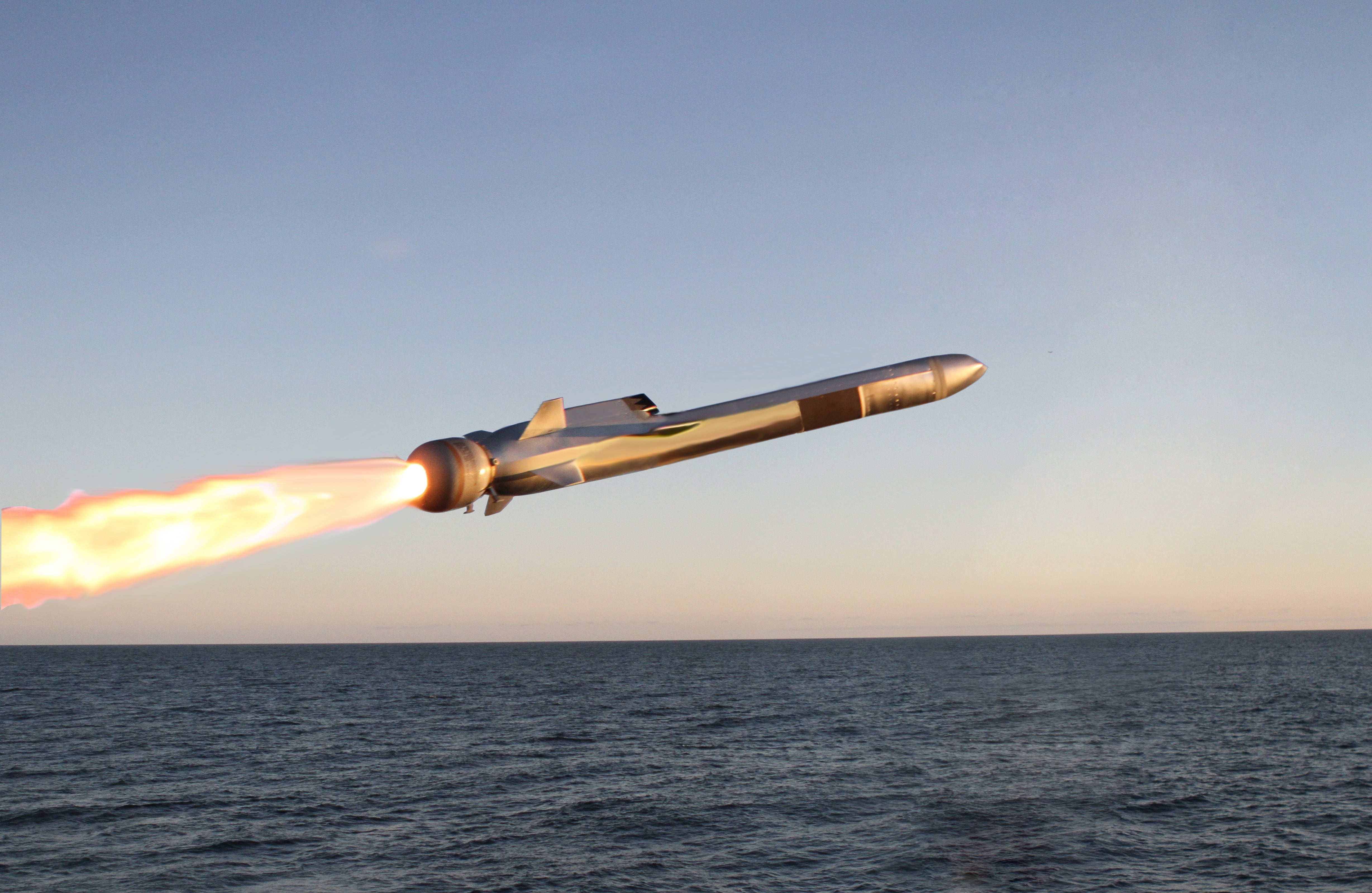
Combined with the MQ-8C Fire Scout, an over-the-horizon surveillance and targeting drone that achieved its initial operational capability in June, the one-two LCS punch of snooping robot helicopter and lethal missile promises to put out-ranged enemy warships in peril.
During a Sept. 11 telephone interview, Cmdr. Eddie Rosso — the Montgomery’s Blue Crew commanding officer — seized on the Fire Scout’s capabilities, especially its maritime search radar, day and night intelligence sensors and proven duty as a communications relay for a network of U.S. warships.
Montgomery recently concluded what Pentagon officials say are highly successful exercises with the Royal Thai Navy and the maritime or air forces of five other nations in the Gulf of Thailand and South China Sea, where China has exerted territorial claims its neighbors contest.
Rosso called the return of the new and improved LCS to the western Pacific a “tangible sign of the U.S. commitment to the maritime security of the region.”
His boss, Capt. Matt Jerbi, the commander of Destroyer Squadron 7, pointed to an increased number of sailors, civilian workers and contractors ashore in Singapore to maintain not only the Montgomery but “multiple forward-operating LCS.”
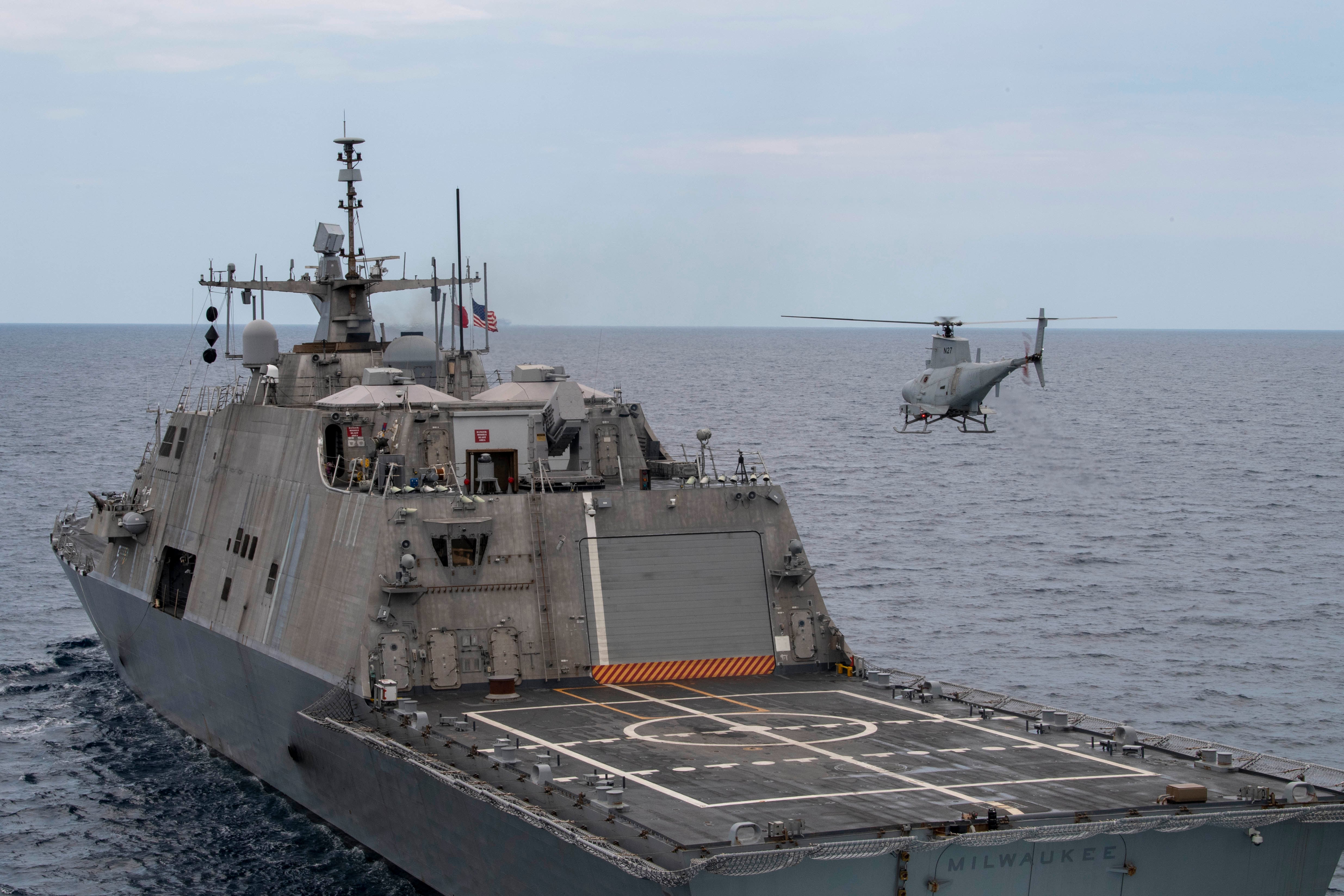
An LCS hasn’t prowled the western Pacific since Coronado left the region in late 2017 to return to its San Diego homeport after a year and a half forward-deployed in Singapore. It was a tour that highlight both the ugly past dogging the littoral combat ship program and its tantalizing promise.
On its maiden cruise to the western Pacific, Coronado broke down and had to spend a month undergoing repairs in Hawaii. By then, five of the eight littoral combat ships delivered to the Navy had suffered expensive mechanical casualties, with investigators blaming bad designs, shoddy maintenance, leadership failures and poorly-trained crews for many of the problems.
Conceived during President George W. Bush’s administration, the LCS was envisioned as a cheap, speedy, nimble, sparsely-manned warship that relied on robots to wage war along shallow shorelines that the Navy’s beefier guided-missile destroyers couldn’t enter.
In an era of counter-insurgency warfare, the LCS seemed like a perfect platform to sneak SEALs or Marines ashore or eviscerate “swarm boats” attempting to attack a flotilla. The promise of new plug-in technology also seemed to offer the ability to install innovative software shortly after Silicon Valley created it.
To the program’s proponents, LCS could become a minesweeper one day and a submarine killer a few weeks later, depending on which equipment module and crew members were being switched out.
But by late 2016, the LCS had morphed into a punching bag for lawmakers who began writing off the program as a $12.4 billion boondoggle.
Instead of replacing the mothballed fleet of venerable Oliver Hazard Perry-class of sub-hunting frigates or the aging Avenger-class minesweepers, critics kvetched that the under-gunned LCS was just a fat and pricey corvette.
Critics blasted the program for the long delays in delivering the mine countermeasure and anti-submarine modules and fretted that an LCS wouldn’t be able to hit an enemy before receiving a death blow that its sensors and weapons couldn’t block and its small crews couldn’t mend.
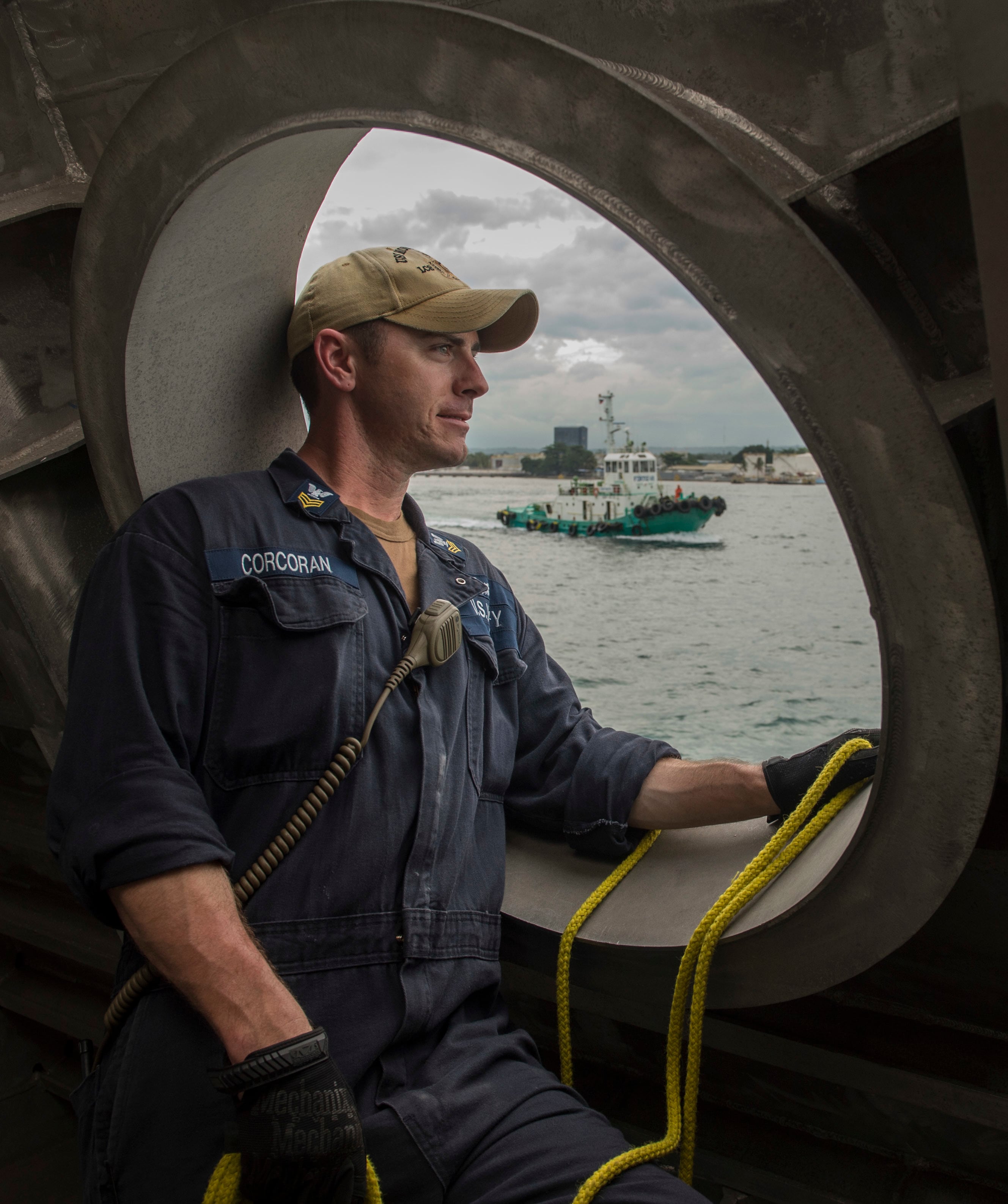
But Coronado’s triumphant return to San Diego turned some heads. Although mechanical gremlins bedeviled its journey west, its forward-deployed tour in Singapore was largely uneventful and trip east was boring.
The deployment stressed the warship’s crew and technology, but the Navy reported better fuel mileage than they anticipated, high reliability with its weapons and equipment glitches that could be fixed in days, not weeks.
Coronado also practiced how it might fight in the future, lurking in atolls to ambush an enemy, then scooting at high speeds to new hiding places.
Destroyer Squadron 7′s Jerbi told Navy Times that the trimarin terror’s “shallow draft, high speeds and tailored mission packages make it well suited to operate in the littoral areas of the Indo-Pacific region.”
In 2015, Coronado successfully test-fired the NSM — the missile now being carried to China’s doorstep.
That seemed to fit then-Vice Adm. Tom Rowden’s concept of “distributed lethality,” a way to use networked surface vessels, submarines and aircraft — including an anticipated fleet of drones — to spread out over large areas to knock foes off their feet.
Constantly invoking the mantra “if it floats, it fights,” Rowden, the man at the helm of Naval Surface Forces, saw the globe’s oceans as a vast chessboard, where he could use littoral combat ships as pawns capable of killing kings.
While the tactical trials played out at sea, Rowden ordered sweeping reforms to the rest of the LCS fleet. He wanted to change the way crews are trained and to find the right level of staffing and maintenance to keep the warships afloat.
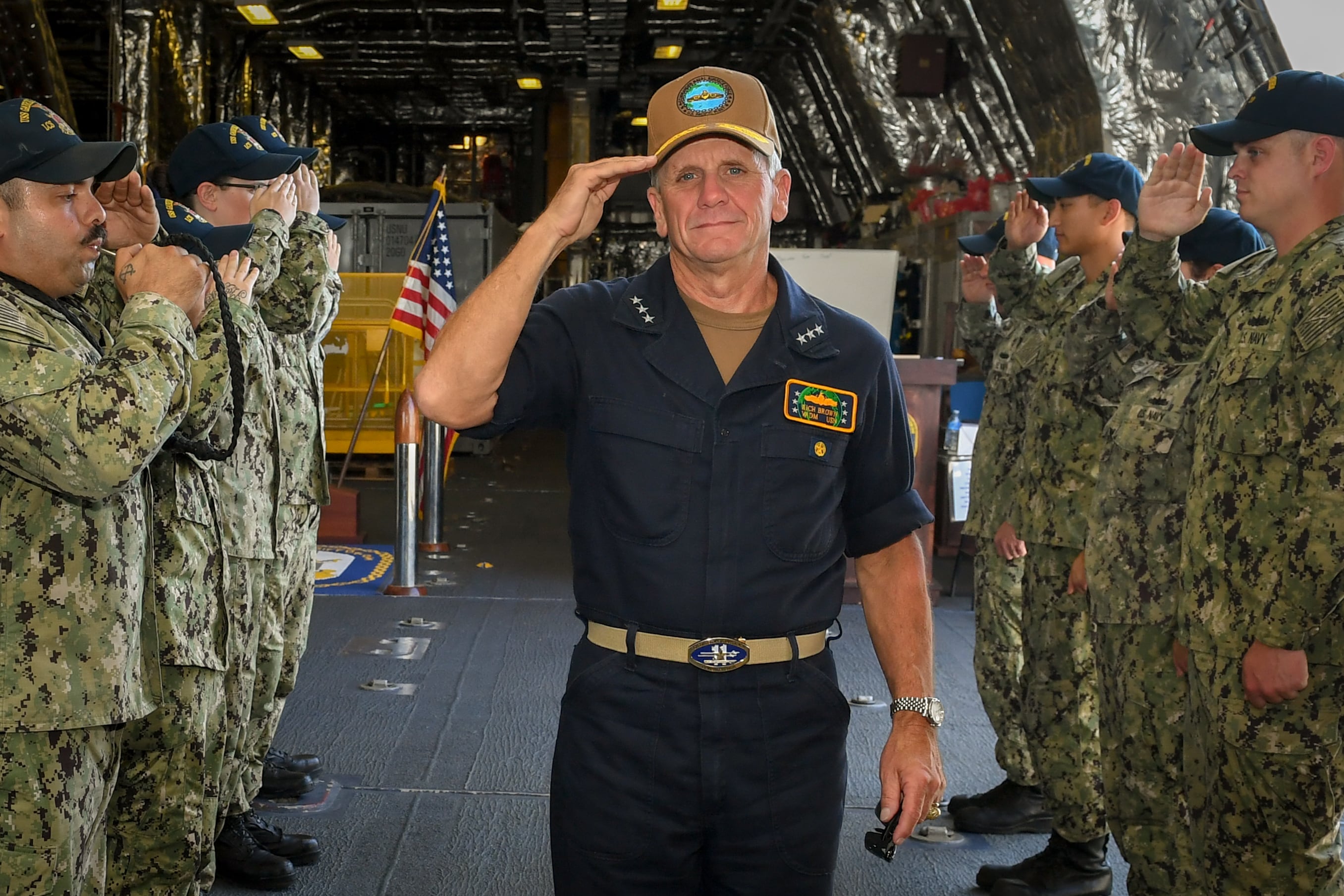
Rowden was replaced as the Navy’s “SWO Boss” in early 2018 by Vice Adm. Richard Brown. His successor expanded the reforms, continuing the stand down but predicting it would pay dividends later.
A little more than a year before Gabrielle Giffords left California, Brown told Defense News that once the LCS deployments started, they weren’t going to stop. He declared the trimarans Montgomery and Giffords would exit for the western Pacific first, followed by the mono-hulled Detroit and Little Rock departing the East Coast.
Following the Rowden and Brown reforms, the LCS fleet was divided between the two coasts: the steel mono-hulled versions of the LCS go to Florida’s Naval Station Mayport while aluminum-hulled trimarin warships like Gabrielle Giffords and Montgomery head for the Pacific.
Over the past 14 years, the Pentagon has purchased 35 of both types of LCS, part of a push to get to a 355-ship Navy.
The first four LCS that were built have been designated as training platforms. The Navy took delivery of the 17th LCS, the Indianapolis, in June.
Although military leaders have asked Congress to begin shifting LCS funds to buy a future frigate — a project called FFG(X) — by 2034 the Navy expects to still man 34 littoral combat ships.
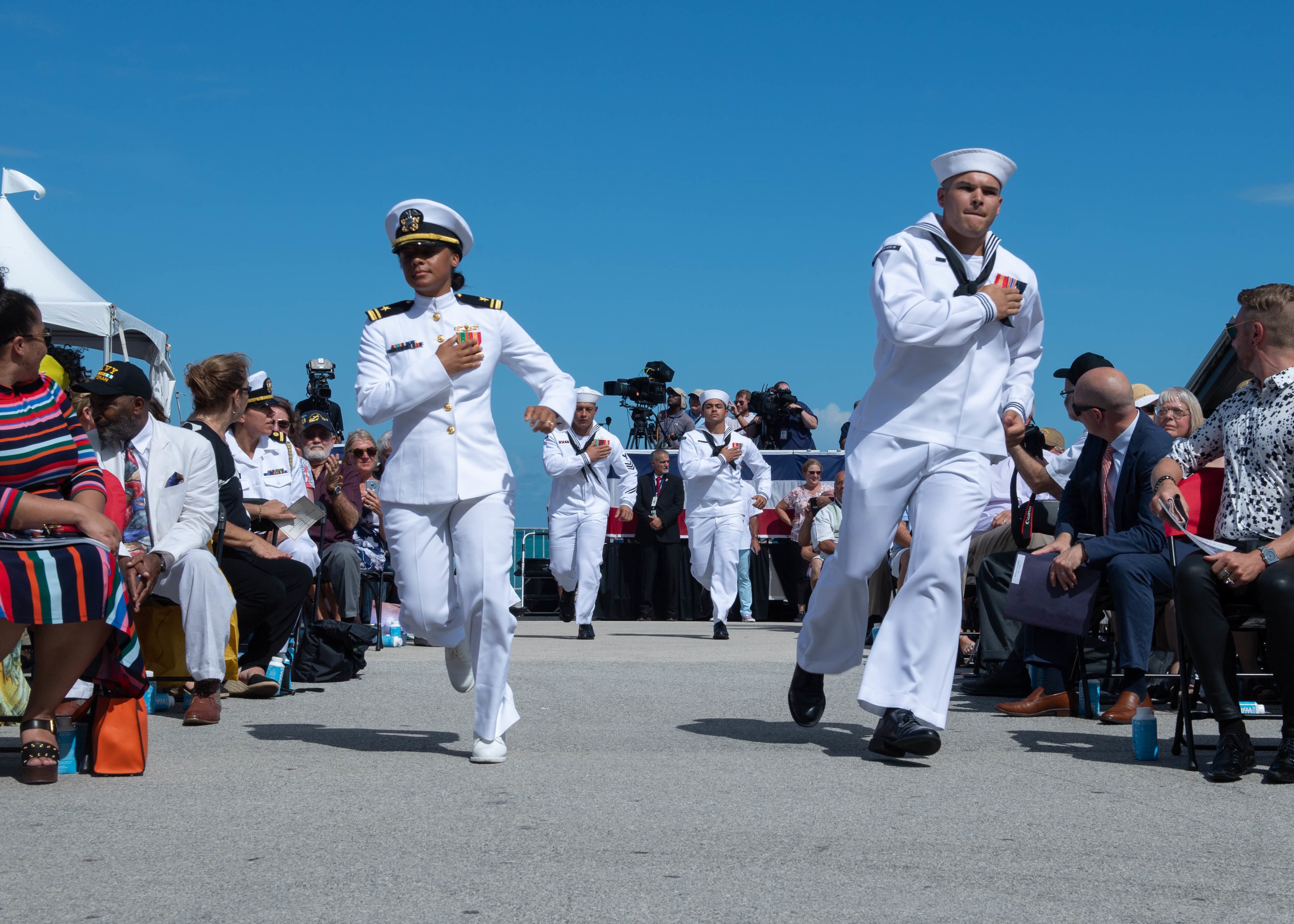
Partly that’s because the Pentagon and key Congressional leaders see the maturing LCS program as a possible hedge in case the FFG(X) runs into its own delays. But it’s also because the LCS remains a relatively cheap alternative to other U.S. warships.
The last trio of LCS vessels was procured for about $523.7 million each, about 30 percent the cost of an Arleigh Burke-class warship, according to the Congressional Research Service. And they rely on fewer crew members, which also cuts expenses.
The Pentagon has called for about half of the littoral combat ships to be forward-deployed at any given time, serving tours that last as long as two years overseas. When the LCS fleet builds to 24 warships, that likely means three in Singapore, another trio at other western Pacific ports, and maybe seven more in Bahrain, where they can patrol the volatile Persian Gulf.
Before the reforms overseen by Rowden and Brown, the Navy envisioned a three-crew-for-two-hulls rotation plan, but they scrapped that.
Gabrielle Giffords, Montgomery and other littoral combat ships now use two crews for each vessel. Sailors fly out to the western Pacific to switch out the crews, which maintains a high tempo of operations for the warships without burning out personnel.
Or, as Capt. Jerbi put it, a rotational deployment to the 7th Fleet, using a Blue/Gold crew structure, “allows the ship to remain operating forward for longer durations than traditional deployments.”
RELATED
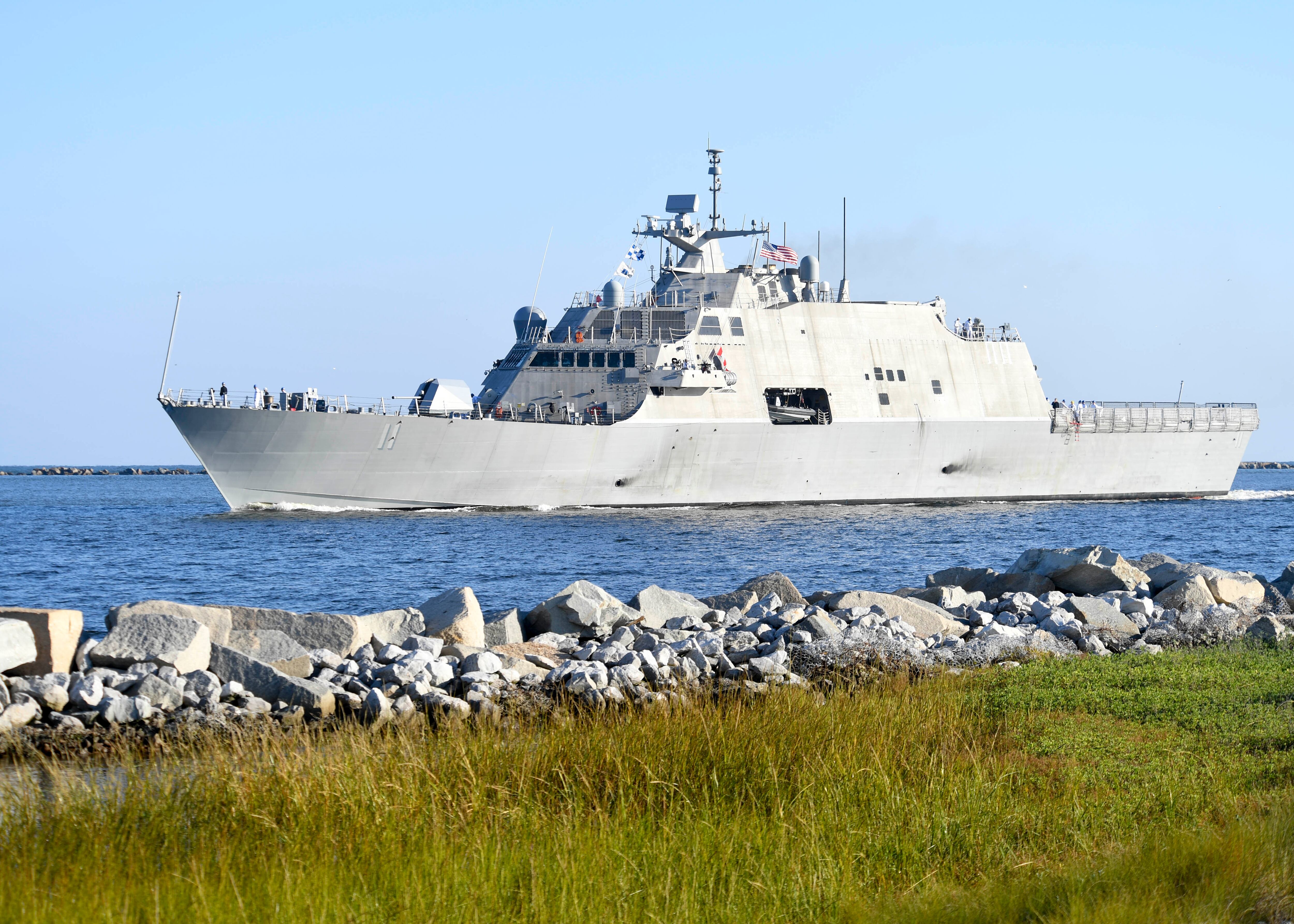
Packed with weapons and sensors with longer ranges and increased lethality, the presence of a meaner and more dependable LCS promises to free up destroyers and cruisers for more important missions, but defense analysts also see them as part of a larger push to better match capabilities with rising Pacific powers.
They point to ongoing Navy’s efforts to field the MQ-25 Stingray unmanned aerial refueling drone to hike the speed and range of the service’s mainstay aircraft, now that Chinese ship-zapping ballistic missiles make it riskier for U.S. carriers to operate in the region.
“It’s great that the Navy is doing these improvements, but it’s very incremental,” said Bryan Clark, a retired submarine officer and analyst with the Center for Strategic and Budgetary Assessments. "It has been a decade since the Navy said: ‘Hey, we need to start an unmanned aircraft program of some kind, and we need put better anti-ship missiles on our ships.’
“And here we are, 10 years later, and the MQ-25 is still making its way toward fielding, which won’t happen for several years, and we’re finally deploying a ship with a better anti-ship cruise missile. So kudos to the Navy for doing it, but this is emblematic of the problem the [Department of Defense] has in making the shift toward new ways of fighting.
"It just can’t get out of its own way to field a new capability in under a decade.”
Prine came to Navy Times after stints at the San Diego Union-Tribune and Pittsburgh Tribune-Review. He served in the Marine Corps and the Pennsylvania Army National Guard. His awards include the Joseph Galloway Award for Distinguished Reporting on the military, a first prize from Investigative Reporters & Editors and the Combat Infantryman Badge.




